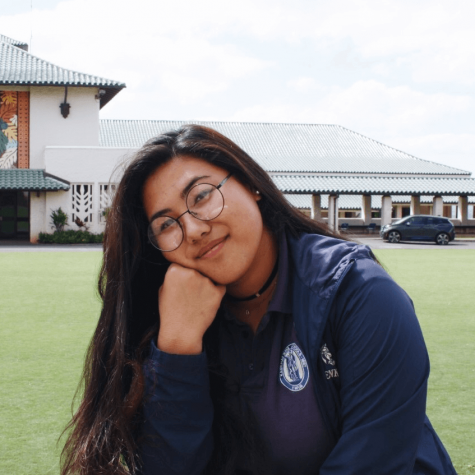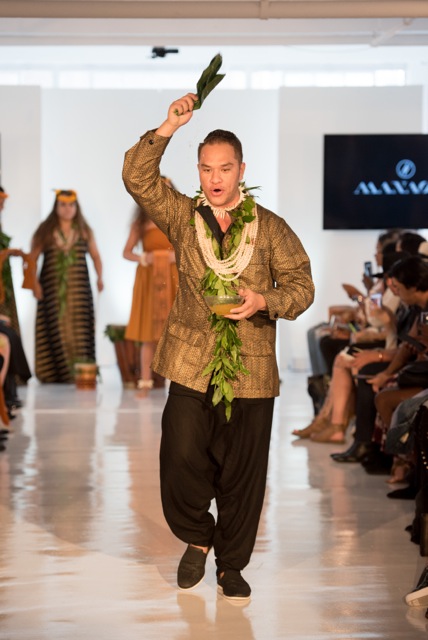Manaola Hawaii Makes Its Mark At NYC Fashion Week 2017
“Anytime you are trying to spread a message, you want to spread the message as far and as wide as you can, so finding something popular like pop culture that involves the arts can speak to the masses. It is inspiring and what was important to me was that I wanted our lāhui to be inspired” says designer Manaola Yap of Manaola Hawaiʻi. It has only been two years since Manaola Hawai’i had first debuted in the local fashion industry, but it has already been able to make its mark on a much larger scale. This year, Manaola Yap and his team were given the wonderful opportunity to show their collection at the New York Fashion Week. With the support of his ohana and hoaaloha, Manaola traveled the almost 5,000 miles to share his passion and culture on a New York Runway. I was able to hear the first hand experiences and manaʻo from him and Zachary Pang, Co-Founder of Manaola Hawaiʻi and 2008 Alumni of Kamehameha Schools.
Q: How did you and your team prepare for the show?
A:“The first thing I did was go over differet concepts and talk with the fashion curators who were working for that specific show, who were from Oxford Studios. We were looking at what our best option was and how we could put our best foot forward especially because our timeline was very short and we had to look at the production. We are a small business, so in order to fulfill the needs for the show we had to work as quickly and as seamlessly as possible. We had decided to use the theme we had showed at Honolulu Fashion Week because we considered it the strongest theme to present in New York. After deciding this, I took it back to the drawing board and looked at the concept of Kōlani and took it up into to a newer version, a refreshed version. I revisited everything I had in that collection and really brought it back to life.” says Manaola Yap. “The mindset behind this, in regards to preperation was based off of a lot of previous research that I have had in different hula and projects I have had in the past. I learned a lot growing up as I was a very intense researcher for Hula Hālau Nā Lei o Kaholokū, but today is now Hālau Manaola. Through that research I was able to look at mele, mythology, written narratives, and transcribed hawaiian newspapers and learn more about chiefly lines and genealogies from ancient times and into the 19th century during the monarchy period. It was very enlightening for me to see the advancements that our hawaiian monarch had made, especially during the early 1800’s which then fast forwarded our Hawaiʻi into a very modernized civilization. For example, We had electricity before the White House [ʻIolani Palace]. ʻIolani Hale was a beacon of hope and a resurrection of what was to be the future of a very advance country and kingdom. Also I looked at Kalākaua’s world tours and his travels through out the world. Looking at what his vision was for our lāhui and it wasn’t until he went on that world tour that he realized the importance and the value of cultural heritage and what that stood for.” “Basically, what was a really important part in preparing for the show was to put together our ʻwhy?’ ” says Zachary. “Why are we doing this show? Why would we go and present hawaiian fashion in New York? To take it a step further with our brand, really we are more than just fashion. When you wear Manaola, you are wearing a piece of culture. We wanted to share that idea with more than just our own audience. We were so honored by all the people who tuned in from Hawai’i and all around the world, but more than that we wanted to present culture on a global scale and what better platform to do that than in New York?”
Q: What was it like being able to share your manaʻo and the kaona behind your designs to people who might have known little to nothing about our hawaiian culture?
A: “It was a really good feeling being able to have the opportunity to reach out to these people because they do not experience these kinds of things. Even the way that we did the show, it was really important for us to use protocol because when you do something with protocol, the protocols are so unique to all indigenous cultures. When you start with protocol, it also helps to prepare spiritually whether we realize it our not. It helps to prepare the spiritual mind and the conscious mind for what is about to happen. It really connects to something special. It was awesome being able to see people connect with it because fashion can be a very cut-throat kind of industry and a lot of times people are always moving and looking out for the next fashion show. Trend-seekers go from one show to the next all day and into the night and so for our show I wanted to make sure we stopped them. We wanted to kind of shock them a little bit. We wanted them to realize that what they are about to see comes from some place very authentic, very real and not coming from some place just because it is pretty. We wanted them to have a true experience with us. This is why we started off the ceremony with ʻOli Pāʻū [A dressing ceremony] and I performed a condensed version because our ʻoli is much longer and also I wanted to create a ceremony that is of today, but continues to keep the elements of the pasts. It was important for me to do it there as a hawaiian cultural artists showing a culture in New York, it only felt right to me in my naʻau that I had to share and show the original symmetry of our silhouettes that are inspired by our ʻāina and our place. Waipiʻo, Hawaiʻi is where that mele comes from and is really where hawaiian fashion culture comes from.”
I was able to discuss with them what the important parts of the process was and where the whole idea of Manaola Hawai’i really came from. Manaola says, “By going through the process of popular culture and realizing what really touches the masses, I choose to use fashion as that medium and attach our indigenous culture to that. Our fashion culture is something, that I feel has been very extinct almost. You have a lot of aloha wear which is beautiful and definitely part of our fashion culture, but pre missionary contact our indigenous cultrual fashion and ceremonial fashion were very intriguing. They were very creative and very ingenuitive and those are the things that have always facinated me as an artist.”
“The emotional part came in when we try to imagine and fantasize. What I notice is that cultural artists today are all about the hurt. About losing the kingdom and of course that is an important thing to remember, but what I wanted to do was imagine. If we were to still have our kingdom and it was still in power, what would our aliʻi be doing right now? What would they be wearing? It really pulled a heartstring for me because as an artist I am able to create these looks as a glimpse into my imagination of our aliʻi living in this time and that is really what touched me. Imagine getting to see these looks on the runway and then imagine our aliʻi enjoying such a fabulous life, but in reality it is only just a dream. That’s what was important to me as a designer from Hawaiʻi. What would I want to see them in?”
I was also able to have a one-on-one interview with Kumu Hula Nani Lim Yap of Hālau Manaola. Here is what she had to say:
Q: As Manaola’s makua, how does it feel being able to see your son get recognized on such a large scale?
A: “Well, in design as far as fashion, it is very exciting because in our family our thing is really just music and hula. So expanding those things agin, with the root being cultrual is very exciting. It is like an extension that he can carry forth into the future. I am truly proud of that.”
Q: A successful person always faces trials and errors to help them grow as a person. How have you seen him [Manaola] grow, not only as a designer and innovator, but as a person through this whole experience?
A: “When he first began, It was really just for fun. When he first started doing ʻŌhe Kāpala [bamboo carving] prints on material, he moved them in ways that we’ve never seen because in hula we’ve only ever seen them to be very lineal. So seeing them spread out over fabric was very exciting and sometimes because it goes against what we know as hula people, you have to ask him what his manaʻo is for this and he can truly explain to you what his thoughts about the print was.
We have seen many different hawaiian fashion trends over the years, but none quite like the work that Manaola is doing. His incorporation of traditonal hawaiian patterns truly dive into our culture in a way that none have really seen. The New York Fashion Week was just scraping the surface of what they can accomplish. His international recognition will hopefully grow and soon spread across the globe, carrying with it our cultural identity. The world is ready to see what manaʻo he has to share next.

Aloha, My name is Pōlaʻa Yim. I am from Kailua-Kona, Hawaiʻi and began attending Kamehameha as a boarder in seventh grade. I have played tennis since seventh grade and this is my third and final year in Hawaiian Ensemble. I am a senior and this is my 2nd year on the Ka Mōʻī staff. I have always enjoyed writing so I thought that the school newspaper was a really good medium for me to voice my opinions and get the students and staff interested in what is happening around school. I really hope to widen my writing experience and engage with the school communtiy through the articles I write.


